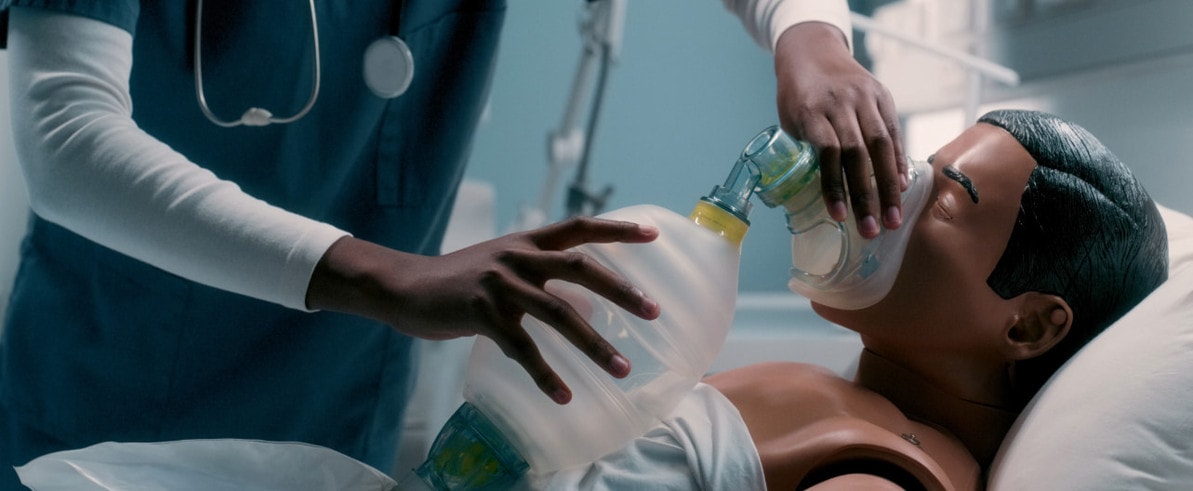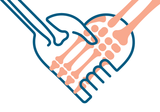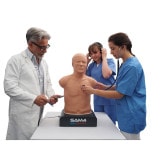Medical Simulation Scenario Ideas, Examples, and a Template
Oct 2nd 2025
Medical simulation has reshaped how educators teach and how clinicians train. In a controlled, zero-risk setting, learners can miss a dose, misread a rhythm, or struggle with a procedure – and then rewind, debrief, and try again. That loop is why well-built medical simulation scenarios outperform passive lectures for building judgment, dexterity, and team communication, primarily when programs draw on evidence-based frameworks and open-access scenario libraries.
Why Medical Simulation Scenarios Matter
The strongest medical education simulation scenarios translate abstract concepts into decisions with consequences. In realistic but forgiving spaces, students make mistakes, reflect in structured debriefs, and return to the bedside more prepared. A study in the Journal of Family and Community Medicine emphasizes that simulation is a critical tool for medical training, as it provides a safe environment for learners to practice clinical skills without compromising patient safety. The simulations support information retention, clinical reasoning, and patient safety – especially when scenarios target specific competencies and include measurable outcomes.
Crucially, simulation can recreate cases someone might never see during rotations or their early career, such as pediatric anaphylaxis, malignant hyperthermia, and obstetric emergencies. Purpose-built medical simulation scenarios help teams rehearse rare instances so that performance feels instinctive when it matters most.
Essential Nursing Simulation Scenarios
Start with fundamental nursing simulation scenarios that build clinical reasoning one decision at a time:
- Patient assessment
- Vital-sign trends
- Discharge process
- Documentation
You can find free, vetted scenarios and competency lists to jump-start your nursing simulation scenario library and align with simulation standards.
After covering the fundamentals, move on to medication administration simulation scenarios. Medication errors are the most frequent and avoidable source of patient harm, so they deserve special attention. Training sessions should emphasize five-rights verification, high-alert drugs, pediatric weight-based dosing, and polypharmacy in older adults. Build in distractions (look-alike vials or interrupted calculations) and require read-backs, barcode checks, and incident documentation reinforced by dose calculation research.
Pro tip: Pair these cases with short debriefs to deepen learning – an approach that Anatomy Warehouse highlights in its recent examination of hands-on learning across various ages and industries.
Advanced Medical Simulation Scenarios
Advanced simulations are often built around common accidents like motor vehicle collisions, falls, burns, and workplace injuries. In these training sessions, the simulated patient may have:
- Blunt chest trauma
- Difficult airway challenges
- Neurogenic shock
- Stroke
- Sepsis
- Peri-intubation cardiac arrest
- Cervical-spine trauma
- Other time-sensitive conditions
Difficult airway simulation scenarios deserve special attention. A difficult airway scenario should include facial trauma, cervical-spine precautions, morbid obesity, and airway anatomy variants – mixing basic and advanced techniques (bougie-first, supraglottic rescue, cricothyrotomy). Support precise, closed-loop communication with evidence updates and strategy guides.
Trauma simulation scenarios, particularly polytrauma cases, require collaborative choreography and clear communication. We recommend designing simulations that force teams to prioritize airway, breathing, circulation – then escalate to imaging, analgesia, and disposition. Use clear triggers and branch points to reward timely interventions. However, don’t overcomplicate this so much that it becomes unrealistic; instead, build a rotating calendar of healthcare simulation scenarios covering time-sensitive emergencies.
To find more ideas for medical emergency simulation scenarios, explore the emergency medicine case libraries.
Simulation Scenarios for Medical Students
Early in training, simulation scenarios for medical students should prioritize history-taking, physical exam technique, and hypothesis-driven testing. As learners progress, fold in diagnostic reasoning, handoffs, and shared decision-making. Use templates that structure cases around chief complaint, red flags, differentials, and “next best step” orders. Get started with the template below, a scenario design primer, or this template of events.
Interprofessional drills pay dividends. Blend medicine, nursing, pharmacy, and PT/OT learners to mirror real-world care, using a shared template for consistency across facilitators.
Your Medical Simulation Scenario Template
Standardize each simulation’s setup to support reproducibility and facilitate more effective debriefs. Adapt this medical simulation scenario template to your needs:
Scenario Overview
- Title:
- Brief: one-sentence clinical snapshot
- Learning objectives: 3–5 measurable outcomes
- Target learners: level, discipline, group size
- Duration & timing: pre-brief, scenario, and debrief windows
- Setting: ED, step-down, clinic room, home visit
Patient Information
- Demographics & relevant history:
- Presenting complaint:
- Current symptoms:
- Vitals: initial values + likely trends
- Medications:
- Known allergies:
- Pertinent labs/imaging:
Scenario Progression
- Initial state & handoff script:
- Expected actions (with timing markers):
- Branch points based on good/poor decisions: initial expected branches; add as needed during training
- Complications and stop criteria: initial expected complications; add as needed during training
- Resolution pathways and disposition:
Equipment & Environment
- Manikin/model requirements:
- Moulage notes:
- Monitors, task trainers, adjuncts, meds:
- Room layout and learners’ roles:
- Standardized patients or confederates:
Assessment & Debrief
- Performance criteria tied to objectives:
- Debrief guide: advocacy-inquiry prompts, reflection questions, etc.
- Follow-up resources and skills lab refreshers:
This structure maintains consistency while allowing for local nuance and creativity.
Implementation Tips
Begin with lower-fidelity healthcare simulation scenarios, and grow toward hybrid or high-fidelity builds as faculty and equipment evolve.
Remember that debriefing is the learning engine. Plan the debrief as carefully as the case itself, using a shared simulation scenario template so every facilitator hits the same beats.
Utilize tactile tools, including full-body simulators, task trainers, and detailed anatomical models. The Anatomy Warehouse simulation collection is comprehensive and known for quality. We offer hands-on tools for every stage of learning! Contact us for guidance or request a custom quote to outfit your program.
Share:




